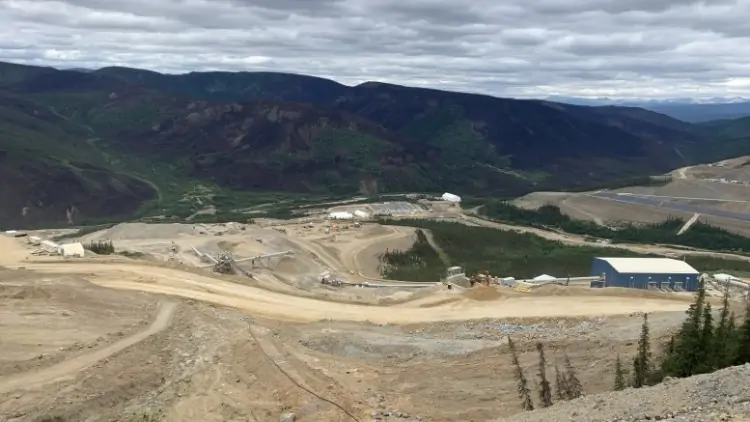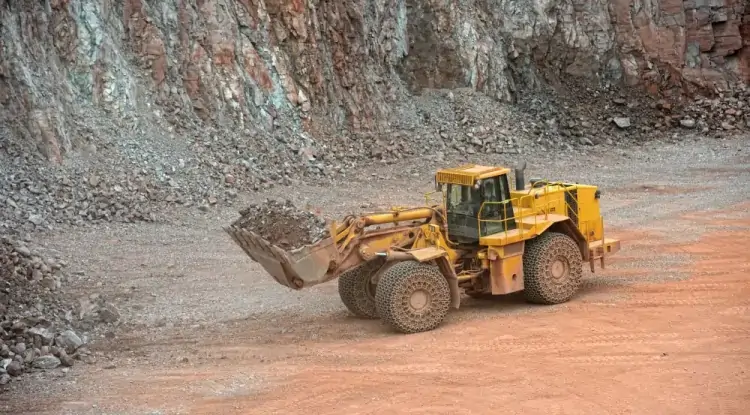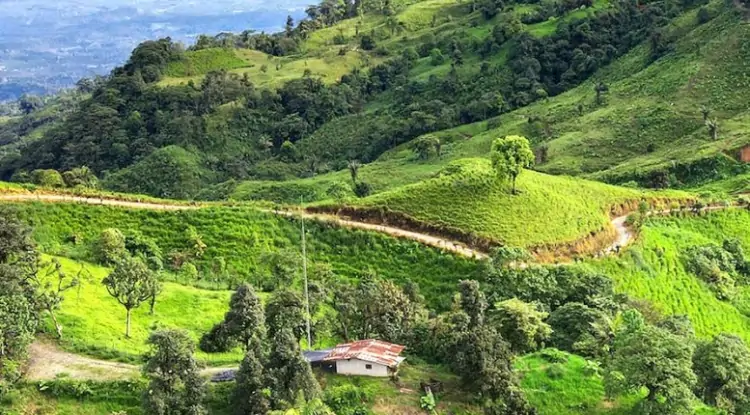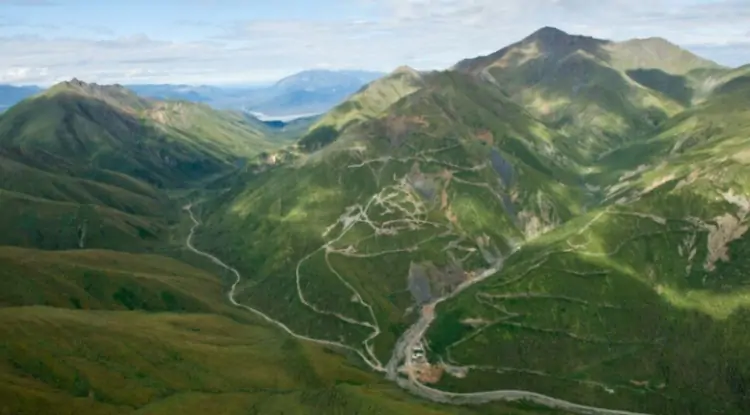Victoria Gold charged after second landslide at Eagle mine this year
Victoria Gold (TSXV: GCX) faces charges after a heap leach pad (HLP) accident this week at its Eagle mine in Yukon caused a landslide and potential cyanide leak, the second landslide this year, the government said Friday.


Two workers received first aid treatment after the accident, with one person sustaining non-serious injuries, Heather Avery, a spokesperson for Yukon’s Workers’ Safety and Compensation Board (WSCB) told reporters in a briefing.
The charges relate to water management at Eagle under Yukon environmental rules and usually carry fines. “They’re before the courts so I’m a little hesitant to comment anymore,” Will Tewnion, compliance director with the Department of Energy, Mines and Resources, said.
Operations were suspended at Eagle, Yukon’s only producing gold mine after the company reported on Monday that a failure at its HLP caused an accident and spill that damaged infrastructure. Victoria shares plunged 84% this week, now valuing the company at $77.8 million. The mine is about 375 km north of Whitehorse.
Investigators have yet to determine the full extent of the damage at Eagle. At the media briefing, they couldn’t say how much contaminated water from the landslide is being contained, how much contaminated water was released and how much cyanide was in the HLP ore at the time of the accident. It’s also unclear how much, if any, contaminated water escaped the property.
The company has a $104-million security posted with the territory as a potential cleanup fund. But Victoria Gold faces looming debt payments of $232.5 million as of March 31 that cloud the company’s future with its sole asset closed for the time being.
Victoria hasn’t responded to requests for comment.
Second landslide
The territorial government also confirmed that the incident was the second landslide to occur at the site since January, when a smaller failure happened at the ore stockpile that wasn’t being leached, Kelly Constable, the department’s director of mineral resources, said at the same briefing.
Further details weren’t available on how close the January landslide was to the accident on Monday, Constable said.
A previous accident at Eagle in March 2021 caused a 17,000-litre spill of concentrate intended for the HLP, but Victoria Gold CEO John McConnell said at the time the spill was cleaned up and put back into the containment area, CBC reported. The company was fined $460 for the spill.
Asked by The Northern Miner about what two such accidents in three years says about the strictness of the inspection regime, Tewnion said that from an enforcement perspective, such issues are dealt with progressively.
“The company has faced charges previously,” he said. “If we went there, and there was a minor infraction, we would address it, perhaps do an inspection report. If it’s a recurring problem it might escalate to inspectors ordering them to do something. If it continued, it would lead to formal charges.”
Constable said it wasn’t clear yet if the company cleanup fund would be enough to cover costs. The heap leach pad can hold up to 90 million tonnes of ore, according to a Victoria Gold technical report. but officials couldn’t say how much of it cascaded down a slope at the site.
One week for water results
Water samples to test potential cyanide contamination were taken from different sites at Eagle on Monday, including at the control pond near the HLP, a containment dam and a natural spring near the mine.
The samples were sent to a laboratory in Burnaby, B.C., and results are expected in five to seven days, Russell McDiarmid, head of major mines with the department, said at the briefing.
Containment dams at Eagle appeared to be holding water that leaked from the HLP, as observed by inspection officers dispatched to Eagle.
A cursory review of underground wells suggests drinking water is safe to consume in the community of Mayo, about 75 km southwest of Eagle, Dr. Shobit Maruti, Yukon’s acting chief medical officer of health, said.
“The likelihood that the drinking water in Mayo is affected is extremely unlikely,” he said. “We have supported the village operators to take samples and also send them down south for testing.”
But more evidence is needed to determine water quality in streams near Eagle and not enough information has been gathered to issue public advisories.
The government is working closely on water testing with the nearby First Nation of Na-Cho Nyäk Dun (FNNND), which is doing its own testing.
‘Dire situation’
In a statement posted on Facebook on Monday, the FNNND expressed deep concern with the potential environmental effects of the heap leach failure.
While laboratory results will still take a few more days, cyanide contamination of creeks could be evident sooner if there are suddenly dead fish, said Cord Hamilton, who identified himself as an engineer affiliated with FNNND.
“It’s beyond doubt there’s been cyanide released,” he said. “First Nations are dismayed and angry. This is a catastrophe unfolding before us. We want to see a higher-level response. We know more is coming. Makeshift dams aren’t the answer. Real significant action is required.”
White River First Nation (WRFN) chief Bessie Chasse said the First Nation is also alarmed by the potential downstream impacts of the accident. The WRFN is about 290 km southwest of Eagle, near the border with Alaska.
“Too often with mines like Faro, Mount Nansen, Minto and Yukon Zinc we have seen companies complain about slow regulatory processes, and then leave massive environmental issues behind them, that Yukoners and all taxpayers have to suffer the consequences of,” she said in a Facebook post on Thursday.
“The Yukon government is too focused on approving mines without thinking through the implications of those approaches.”














